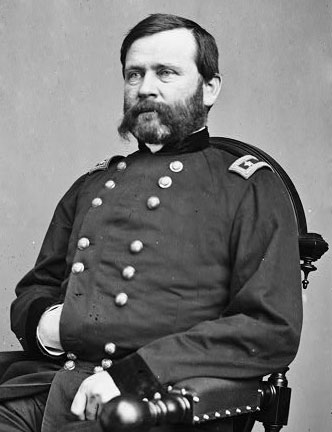David Hsueh on “Requiem for Innocence: Destruction of Nature and Animals in the Civil War”
Five days after the bloodiest single day in American history at Antietam, Union XII Corps acting commander Brig. Gen. Alpheus Williams rode across the devastated battlefield. The ground was still littered with corpses, and the stench of decay hung in the air. That evening, in a letter home to his daughter, Williams struggled to describe the scenes he had witnessed. One image, however, refused to leave him:
“The number of dead horses was high. They lay, like the men, in all attitudes. One beautiful milk-white animal had died in so graceful a position that I wished for its photograph. Its legs were doubled under, and its arched neck gracefully turned to one side, as if looking back to the ball hole in its side. Until you got to it, it was hard to believe the horse was dead.”
Unbeknownst to Williams, three days earlier, on September 19, the photographer Alexander Gardner had encountered the very same animal. He captured it in a haunting image later published in his Photographic Sketch Book of the War, titled “Confederate Colonel and Horse, Both Killed at the Battle of Antietam.” Williams’ words and Gardner’s lens together preserved the same tragic scene: an animal of striking beauty transformed into a casualty of war. Once overlooked, the photograph has, in recent decades, gained recognition as a powerful emblem of Antietam and of the Civil War itself, embodying not only the vast human slaughter but also the silent suffering of the animals drawn into the conflict.
This talk explores the wider devastation of the natural world during the Civil War: the destruction of landscapes, the slaughter of horses on the battlefield, and the displacement of other wildlife. It portrays the conflict not only as a human tragedy but also as an ecological catastrophe—a wound inflicted upon both creation and the divine. Its aim is to illuminate a different dimension of wartime destruction: the suffering borne by those who could not speak for themselves.
David Hsueh is a fourth-year political science student at the University of California, Berkeley. An avid history enthusiast since kindergarten, his first introduction to the American Civil War came through reading about President Lincoln. His true passion for the war began after his first viewing of the movie Gettysburg and his subsequent visits to the Gettysburg and Antietam battlefields seven years ago, at age 11. His main interests in the Civil War center on leadership decisions at the brigade-to-army level and on human-interest stories—both of generals and of the common soldier. A cinephile and film lover, he drew inspiration for the themes and topic of this talk from Andrei Tarkovsky’s Andrei Rublev and Robert Bresson’s Au Hasard Balthazar.





